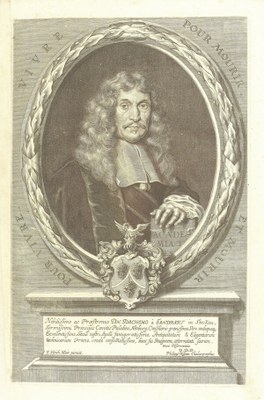Susan Maxwell // Wittelsbach Patronage and Collecting in the Context of Joachim von Sandrart's Teutsche Academie
The Teutsche Academie der Edlen Bau-, Bild- und Mahlerey-Künste, published in 1675 by the artist and theorist Joachim von Sandrart (1606-1688), included not only the earliest collection of artists' biographies published in Germany, but also laid a theoretical foundation for how to educate artists and patrons. Sandrart's relationship with Prince Elector Maximilian I of Bavaria (1573-1651), one of the most consequential collectors of the early modern period, thus can reveal to what extent the ideas espoused in the Teutsche Academie became manifest in Maximilian's collecting practices, specifically as he began to reestablish his collection after the losses and upheavals of the Thirty Years' War.  Sandrart heaped effusive praise on Maximilian in the Teutsche Academie, both as an ideal patron and art enthusiast. Maximilian used his collections and his official portraiture as a means of statecraft and had an astute understanding of the integral role that art played in establishing his presence as a major figure in elite political circles. Sandrart's descriptions of Maximilian's new painting gallery at his country estate, the Palace of Schleissheim, located outside of Munich, provide invaluable insight in Maximilian's goal of creating a universal collection of both old and new masters, from Albrecht Dürer, to Raphael and, most famously, Peter Paul Rubens' four large hunt paintings..
Sandrart heaped effusive praise on Maximilian in the Teutsche Academie, both as an ideal patron and art enthusiast. Maximilian used his collections and his official portraiture as a means of statecraft and had an astute understanding of the integral role that art played in establishing his presence as a major figure in elite political circles. Sandrart's descriptions of Maximilian's new painting gallery at his country estate, the Palace of Schleissheim, located outside of Munich, provide invaluable insight in Maximilian's goal of creating a universal collection of both old and new masters, from Albrecht Dürer, to Raphael and, most famously, Peter Paul Rubens' four large hunt paintings..
Sandrart completed several commissions for Maximilian, including the 1643 portraits of the Prince Elector and his second wife, Maria Anna of Austria. A cycle of the Twelve Months that were accompanied by verses by the Dutch poet Joost van den Vondel (1587-1679), were displayed at the new picture gallery at Schleissheim. Placing these works within the context of theoretical debates about the role of portraiture in an artist's oeuvre, or the connections between art and literature that would be taken up in the Teutsche Academie, will reveal a nuanced and mutually beneficial relationship between artist and patron.
[Caption: Portrait Joachim von Sandart, Kupferstich, Lucas Kilian nach Johan Ulrich Mayr, n.d | Source: https://digi.ub.uni-heidelberg.de/diglit/sandrart1675a/0011]
